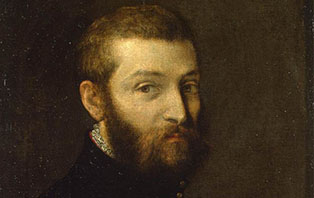Wedding at Cana
Paolo Veronese’s Wedding at Cana displayed first in 1563 is one of the most historic paintings at the Louvre in Paris. The painting, being the largest in the Louvre, comes across many as one of the greatest valued pieces of art of this time.
The Wedding at Cana is set out to exalt the wealth and power of Venice. He shows that the immense guests at the wedding feast are recognizable to many art historians. Notable King Francis I with the Queen of France, Mary Tudor, and the Emperor Charles V. Musicians perform in the low foreground of the painting with two dogs and a table seated with an hourglass at its center.
Veronese portrayed himself in the striking white costume even though he was a modest man. Apparently Veronese enjoyed fine clothes and dining. Open to discussion is the identity of the younger musicians who apparently might be Veronese’s sons even though at the time of the painting had not yet been born. He describes the musicians as bizarre and not idolized within the painting itself.
Veronese was trying to capture the same or greater image created by Tintoretto whose painting he much admired. Tintoretto depicted in the Wedding at Cana holds a medium-sized instrument same as Veronese.
The canvas is ginormous with art in motion endlessly moving about and restlessness far from stationary.





